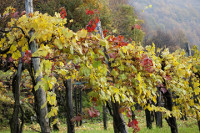As the “Internet of Things” becomes increasingly prevalent this year, much has been written and systems devised to allow all manner of data to be gathered, analysed and devices controlled via wireless data networks. However these systems aren’t limited to items of a technological nature, as the broad IoT can also be of great benefit to primary producers and agriculture of almost any type. But how?
It’s simple – if more data about a particular item of interest is available, you can make better decisions concerning that item. If that data was available in real-time, you can make informed decisions faster. Let’s consider four areas in the farming arena that can benefit from this technology with some example possibilities.
Horticulture – There’s much more to achieving profitable returns on horticulture than just planting a seed and hoping it will grow. Apart from monitoring the weather – wireless sensors can be used to monitor soil temperature and moisture (even for multiple depths), greenhouse temperature and humidity, leaf wetness levels, solar radiation, and rain levels. Real-time data from these types of sensors can be useful to change crop maintenance procedures from regularly-scheduled to “when required” – saving time and money. Furthermore as data is gathered over time, more accurate predictions can be made with regards to crop success with regards to external factors.
Livestock – The monitoring of livestock is crucial, especially for expensive breeds that require a higher level of maintenance. Tracking individual beasts via a GPS connected to a local wireless network makes it easy to locate animals in a hurry, alarm you if one or more range too far from home – or if one hasn’t moved during the day, which could either mean an animal has become injured or isn’t getting enough exercise. With RFID technology counting and tracking the animals individual statistics from birth to sale becomes faster and simpler. Furthermore as animals come and go the hardware can be reused for new births or acquisitions, reducing recurring costs and further hardware investment.
Security – This is often overlooked due to the nature of the prevailing surroundings and personal relationships built over generations. However as the rest of society has an increasing number of unsavoury elements, so too does the agricultural sector. There are many ways to keep track of assets, such as: adding GPS tracking devices to expensive machinery; intrusion-monitoring sensors to sheds, gates, pump boxes and greenhouses; ultrasonic motion sensors to detect vehicle movement on out of the way tracks and access roads; tank water level sensors can detect when the level drops too quickly – alerting you of a leak or water theft; and closed circuit television cameras are now digital, and can send images that are legible during day and night allowing monitoring of any asset of interest – as well as record passers-by helping themselves to popular vegetable crops.
Water management – In some areas the supply of water is costly. As water rights are reduced and transport costs increase, monitoring water use and wastage is crucial. Water levels can be monitored across all storage tanks, flow sensors can monitor creek and river water movement and speed, and with data from soil moisture sensors, your system can supply the minimum required for agricultural purposes instead of timed watering sessions. Furthermore automated systems can indicate faults in water supply, tank leaks, and faults with irrigation systems – letting you know immediately before wastage becomes too serious and expensive.
All of the sensors and devices mentioned can communicate via wireless networks using WiFI or Zigbee-based technology. For remote situations or multiple-site use these WiFi devices can then communicate via the mobile broadband modems and existing cellular networks. Whether you’re in town or abroad, the data can be accessed via the Internet from almost anywhere.
The examples mentioned above may sound like overkill – or replacement of the work of an experienced farmer. However by automating systems and gathering data remotely you can reduce the time required to stay on top of routine tasks, increase efficient use of expensive resources, become immediately aware of any problems – which leaves you with more time to grow your business.
As an Australian organisation led by a team with a diverse background and industry experience, the LX Group can partner with you for your success. With wireless data and bespoke hardware experience in a wide variety of industries we can help you make the most of your business with our expertise and the best technology from around the world. For more information or a confidential discussion about your ideas and how we can help bring them to life – click here to contact us, or telephone 1800 810 124.
LX is an award-winning electronics design company based in Sydney, Australia. LX services include full turnkey design, electronics, hardware, software and firmware design. LX specialises in embedded systems and wireless technologies design. https://lx-group.com.au
Published by LX Pty Ltd for itself and the LX Group of companies, including LX Design House, LX Solutions and LX Consulting, LX Innovations.


